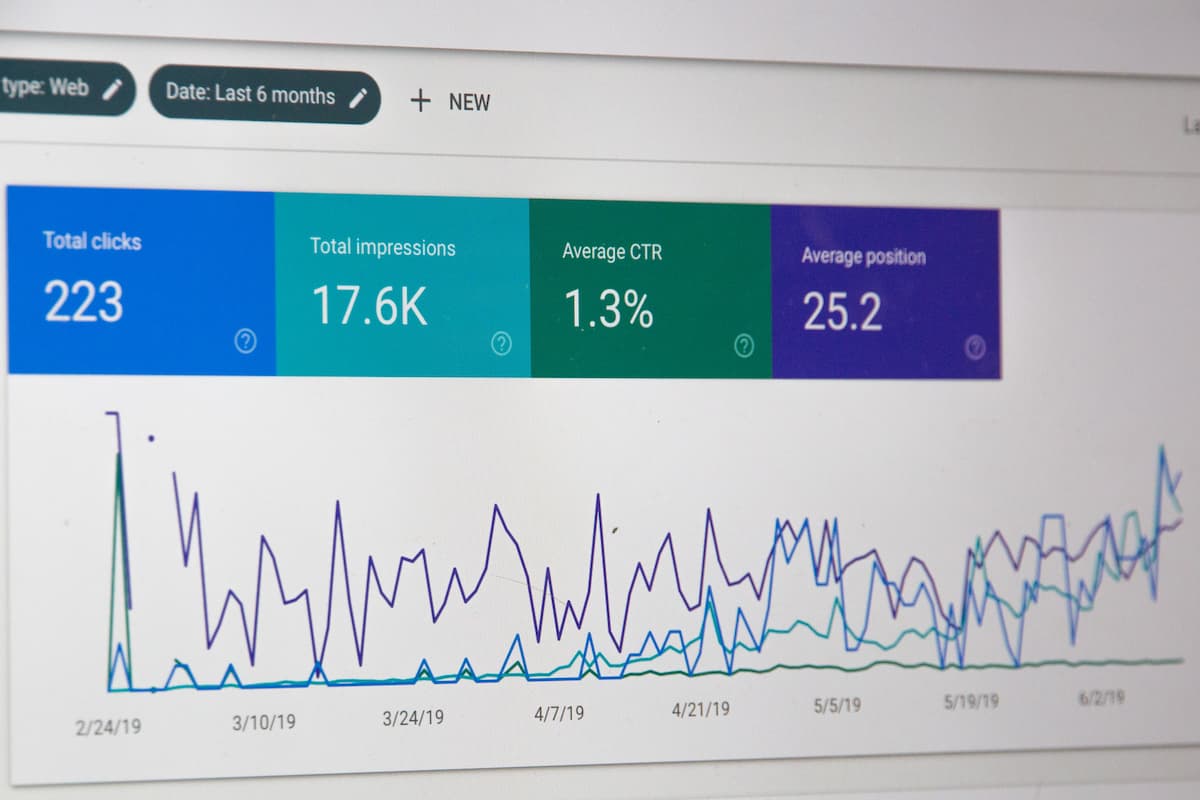
Measuring SEO: How long does it take to see results?

5 SECOND SUMMARY
- 6 to 12 months is usually a long enough period to be able to see the impact of SEO efforts.
- Understand what you can and can’t control. Forget about your competitors, keyword difficulty scores, Google’s latest core update and anything outside your sphere of influence.
- Know that the more resources you have to put towards SEO – time, personnel and money – the quicker you’ll see results, however it still takes time to build a strong, resilient and well crafted site.
How long does it take to see ROI from search engine optimisation?
How long does SEO take to see results?
SEO is often referred to as the long game, the slow burn, or any number of other descriptors that hint that it takes a long time to see results. Whilst this is true to an extent, there are definitely things that move the needle faster than others.
SEO is a combination of different strategies, including technical SEO, good strong consistent content, plus a range of other factors.
Let’s take a look at what you can and can’t control, and how long it can take to see results from SEO.
First: Forget about what you can’t control
Your competitors
Firstly, you can’t control what your competition is doing, so don’t spend all your time and energy trying to copy someone else’s strategy.
You’ll always be on the back foot, and you might also be trying to replicate something that looks successful from the outside (ie: a competitor’s strong visibility on search engine results pages) but isn’t actually that successful where it matters (their site may not be converting well).
So, forget the rest and concentrate on having a clear strategy for your own business. Make sure it ties back to your overall business plan, and that you set incremental goals to measure how you’re travelling.
The past
I’ve recently worked with a client on their website redesign project which was badly handled by the developers. Two years of hard SEO slog has been all but lost; hundreds of articles have disappeared, and the client has taken a massive SEO hit.
This is a crappy result for sure: but dwelling on what has happened isn’t helping anybody. We are forging ahead to try and repair the damage, but truly accepting this setback and moving on is critical. Thinking that a couple of months of magic band-aid solutions is going to fix it isn’t realistic, so it’s a chance to reassess what we want to achieve with our content and get stuck into working on the items that will have the greatest effect on the client’s bottom line.
Likewise, wanting to see huge results quickly for a brand new site isn’t realistic, as it takes time to be crawled, to build authority, and to earn backlinks.
How difficult it is to rank for keywords in your niche
Whilst there are always keywords that have higher and lower traffic in any niche. ‘Cheap airfares’ is likely to be much harder to rank for than ‘tiny cowboy hat for guinea pig’.
Your business is your business, and you can’t control the market size.
What you can do however is to conduct some detailed keyword research, pinpoint keywords that are less difficult to rank for but still have strong traffic, and approach your content plan by going deep and getting specific, providing quality, helpful content for your readers.
How many hours you can spare
It would be awesome if all businesses had limitless marketing resources but of course that’s not the case! If you only have a few hundred dollars in the budget or 5 hours a week to dedicate to SEO, thinking you’ll see super-fast results is a path to disappointment.
As with most business activities, the more resources you can spare, the faster things will happen. However, if you do only have 5 hours – spend them wisely! You can still make good SEO progress with smart planning and a prioritised action plan.
OK – now let’s look at what you can control!

3 things you can leverage for SEO success
Technical SEO
Technical SEO refers to the nuts and bolts of how your site is structured, how easily it can be crawled and indexed by search engines, how fast it is, whether it is secure, and a host of other factors.
Google and other search engines will give preference to sites that offer a better user experience, so this means having proper security in place with SSL encryption, fast load times and excellent mobile-friendliness (think big, easy to press buttons; fast load times; site designs that look good; and a structure that makes sense on mobile).
Ensuring all your pages are unique and don’t show duplicate content is another indicator of a positive user experience. Doubling up on information can be confusing for users, so even if you have a lot of similar products you should try your best to describe them in different ways rather than simply duplicating content across pages.
Backlinks
Backlinks are simply links from other sites that point to yours. They are an indicator of trustworthiness, authority and helpfulness for the user, so Google often sees them in a positive light.
However, some backlinks are referred to as ‘toxic’ – think Russian dating sites that link to your product pages – so knowing who is linking to your site is important (both free and paid tools can help you dig into your backlinks).
Building new backlinks is good practice too, however, it can often be slow manual work. Identifying companies, news sites or stores that address a similar audience to yours and asking them to link to your site is a good way to get relevant businesses linking to your site.
Not everyone will be obliging of course, but if you can spare some time to build quality, relevant backlinks, it will have a positive effect on your SEO efforts.
And of course – content!
Ah, content – the most familiar and approachable SEO technique, but the thing that can suck a lot of your time!
Content is one of Google’s top three ranking factors, but that doesn’t just mean pages of boring text are going to get you found.
Your content needs to show your expertise, your authority on the subject, and engender trust in your audience. Google calls this EAT or expertise, authority, trustworthiness.
Positioning yourself as a trustworthy source of information means users can trust you to provide honest information that is true and accurate.
So how long does it take to see SEO success?
SEMRush reports that for many businesses with finite resources, it can take from 6 months to a year to see good results from SEO activities.
“There’s no getting away from the fact that SEO takes time. Google (and other search engines) want to show the best result for any given search query, and it takes time to deserve to rank. You’ve got to earn top search visibility. But with the right strategy in place, 6 to 12 months is a long enough period to be able to see the impact of SEO efforts and to be able to justify ongoing investment into growth.”
For this reason, viewing SEO as a long term commitment is a wise approach, rather than attempting an intensive burst of activity for a few months and then neglecting your site for a year.
It’s far more sustainable (for both your site’s health and your budget) to take a slow and steady approach to SEO.
Determining what actually constitutes success is important too – make sure you’ve got some defined goals that are measurable, attainable and tied to your overall business plan.
Get help with your content marketing


